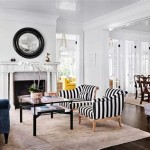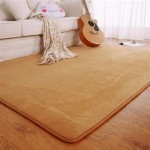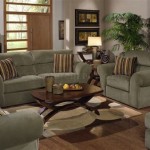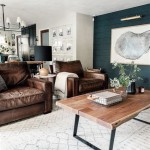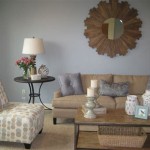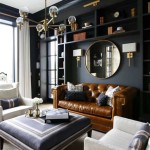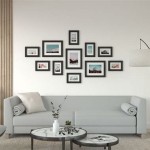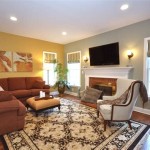Elevating Living Spaces: Innovative Wall Feature Ideas
The living room serves as a central gathering space within a home, a place for relaxation, entertainment, and social interaction. Consequently, the aesthetic appeal and functional design of a living room contribute significantly to the overall ambiance and perceived value of the residence. One effective strategy for enhancing the visual interest and character of a living room involves the incorporation of carefully considered wall features. These features can range from subtle textural enhancements to bold architectural statements, each contributing a unique element to the overall design scheme.
Strategic planning is paramount when embarking on a wall feature project. Considerations should include the existing architectural style of the room, the desired aesthetic, the available budget, and the intended functionality of the feature. For example, a minimalist contemporary space might benefit from a sleek, monochromatic feature wall, while a more traditional setting could accommodate a detailed, textured treatment. Furthermore, it is crucial to assess the existing lighting conditions to ensure that the chosen feature is appropriately illuminated and complements the overall ambiance.
This article explores a variety of living room wall feature ideas, encompassing different styles, materials, and functional applications, providing a comprehensive overview for homeowners and designers seeking to enhance their living spaces.
Textural Wall Treatments: Adding Depth and Dimension
Textural wall treatments represent a versatile approach to adding visual interest without necessarily involving bold colors or patterns. These treatments rely on the tactile and visual impact of different materials and techniques to create depth and dimension within the room. The selection of the appropriate texture is crucial to harmonizing with the overall design scheme and achieving the desired aesthetic effect.
One popular option is the use of textured paint. Specialized paints are available that incorporate aggregates, such as sand or marble dust, to create a variety of raised patterns and surfaces. These paints can be applied using different techniques, such as stippling, rag rolling, or troweling, to achieve customized results. Textured paint is a relatively affordable and accessible option, suitable for DIY projects or professional application.
Another approach involves the application of wallpaper with a textured surface. Embossed wallpaper, for instance, features raised patterns that create a tactile and visually appealing surface. Grasscloth wallpaper, made from natural fibers, introduces a subtle textural element along with organic warmth. Furthermore, textured vinyl wallpaper offers durability and ease of maintenance, making it a practical choice for high-traffic areas.
Adding wood paneling creates a sophisticated and warm ambiance. Tongue-and-groove paneling offers a classic, clean look, while shiplap paneling introduces a more rustic, farmhouse-inspired aesthetic. Reclaimed wood paneling adds a unique, eco-friendly element with a story behind it. The orientation and spacing of the wood panels can be varied to create different visual effects, such as horizontal lines that visually widen the room or vertical lines that emphasize height. The type of wood, its finish, and the style of installation, all contribute to the overall character of the wall feature.
Brick walls, either exposed or faux, provide a robust and industrial aesthetic. An exposed brick wall adds character and history, particularly in older homes or loft spaces. Faux brick panels offer a more cost-effective alternative, replicating the look and feel of real brick without requiring structural modifications. The brick can be painted, whitewashed, or left in its natural state, depending on the desired style. Consider the color of the grout and the overall texture of the brick to complement the surrounding décor.
Stone veneer offers a natural and sophisticated look. Natural stone veneer, made from thin slices of real stone, provides an authentic and luxurious finish. Manufactured stone veneer, made from concrete, offers a more affordable and lightweight alternative. Stone veneer is available in a variety of colors, shapes, and textures, allowing for customization to suit different design preferences. It can be used to create a focal point or to add a rustic touch to the living room.
Architectural Wall Features: Integrating Structure and Design
Architectural wall features go beyond surface treatments, integrating structural elements into the design to create a more significant impact. These features can redefine the spatial dynamics of the room, create visual interest, and serve functional purposes.
Built-in shelving units offer both aesthetic appeal and practical storage solutions. They can be designed to seamlessly integrate into the wall, creating a clean and minimalist look. Built-in shelves can house books, decorative objects, electronics, and other items, helping to declutter the living room. The design of the shelving unit can be customized to suit the specific needs and style of the room, with options for open shelves, closed cabinets, and integrated lighting.
Fireplaces, whether gas, electric, or wood-burning, serve as a natural focal point in a living room. The design of the fireplace surround can significantly impact the overall aesthetic. A modern fireplace surround might feature clean lines and minimalist materials, such as concrete or metal. A traditional fireplace surround could incorporate ornate details, such as carved wood or marble. The fireplace can be integrated into a larger wall feature, such as a built-in media center or a stone accent wall, to create a cohesive and dramatic effect. Consider the venting and safety requirements for the specific type of fireplace being installed.
Arches and niches can add architectural interest and character to a living room. An archway can define a transition between spaces, such as between the living room and dining room or hallway. Niches can be used to display artwork, sculptures, or other decorative objects. The shape, size, and style of the arch or niche should be carefully considered to complement the surrounding architectural elements. Lighting can be used to highlight the arch or niche and draw attention to the displayed items.
Accent wall paneling with geometric patterns provides a modern and artistic touch. This involves creating a wall feature using geometric shapes and patterns created from wood, metal, or other materials. These panels can be custom-designed to create unique and eye-catching designs. The color palette can be chosen to complement the overall décor or to create a bold contrast. Consider the scale of the geometric patterns in relation to the size of the wall and the room.
A feature wall with integrated lighting serves as a functional and aesthetically pleasing element. Recessed lighting can highlight specific areas of the wall, such as artwork or architectural details. LED strip lighting can create a soft ambient glow, enhancing the overall ambiance of the room. The lighting can be controlled with dimmers to adjust the brightness and mood. Consider the color temperature of the lighting to create the desired effect, whether warm and inviting or cool and modern. It is vital to consider electrical codes and safety standards when installing any lighting features.
Decorative Wall Features: Emphasizing Visual Impact
Decorative wall features focus primarily on enhancing the visual appeal of the living room, adding personality and character to the space. These features can range from simple artwork arrangements to elaborate murals, each contributing to the overall aesthetic.
Gallery walls involve arranging a collection of artwork, photographs, or other decorative items on a wall. The key to creating a successful gallery wall is to curate a cohesive collection that reflects personal style and complements the overall décor. The arrangement can be symmetrical, asymmetrical, or a combination of both. Consider the size, shape, and color of the artwork, as well as the spacing between the items. Templates and layouts can be used to plan the gallery wall before installation, ensuring a balanced and visually appealing composition.
Large-scale artwork serves as a commanding focal point in a living room. A single, impactful piece of art can instantly elevate the aesthetic appeal of the space. Choose artwork that reflects personal taste and complements the color scheme and style of the room. Consider the size and scale of the artwork in relation to the size of the wall and the room. Proper lighting is essential to showcase the artwork and enhance its visual impact.
Murals offer a unique and personalized way to transform a wall. A mural can be painted directly onto the wall or applied using wallpaper or vinyl decals. The design of the mural can range from abstract patterns to realistic landscapes, depending on personal preference. Consider the scale and style of the mural in relation to the size of the wall and the room. Murals can be used to create a sense of depth, add color, or tell a story.
Mirrors, strategically placed, can enhance the sense of space and light in a living room. A large mirror can visually double the size of the room, making it feel more open and airy. Mirrors can also be used to reflect natural light, brightening up the space. Consider the placement of the mirror to maximize its effect and avoid reflecting unwanted views. Decorative mirrors, with ornate frames or unique shapes, can also serve as a focal point.
Wall tapestries introduce texture, color, and pattern to a living room. Tapestries can be made from a variety of materials, such as wool, cotton, or silk. They can feature intricate designs, bold colors, or subtle patterns. Tapestries can be hung as a single piece or arranged in a gallery wall. They can add a bohemian, eclectic, or traditional touch to the living room, depending on the style of the tapestry.
In summary, the selection and implementation of living room wall features provide a potent mechanism for enhancing both the aesthetic appeal and functional utility of the space. By carefully considering the architectural style, budget, and desired aesthetic, homeowners and designers can create captivating wall features that contribute significantly to the overall ambiance and perceived value of the residence.

20 Beautiful Living Room Accent Wall Ideas

Designing Your Own Stunning Living Room Accent Wall Andor Willow

Accent Wall Ideas 32 Designs To Elevate Your Room S Style

6 Wood Feature Wall Ideas You Ll Want To Steal For Your Home Hometrust

7 Feature Wall Ideas Starry Homestead

20 Accent Wall Ideas For A Showstopping Room Shuttercraft

8 Best Feature Wall Ideas Create A Stunning Accent Using Panels Wallpaper Paint And More
:max_bytes(150000):strip_icc()/240320_GraySpace_Hawthorn_Jpeg-4800px-300dpi_006-440fa333758d4145b6568b6d00e4592f.jpg?strip=all)
23 Living Room Accent Wall Ideas To Energize Your Space

Seven Feature Wall Ideas To Transform Your Home

Transform Spaces With These Practical Feature Wall Designs Smart Decor

